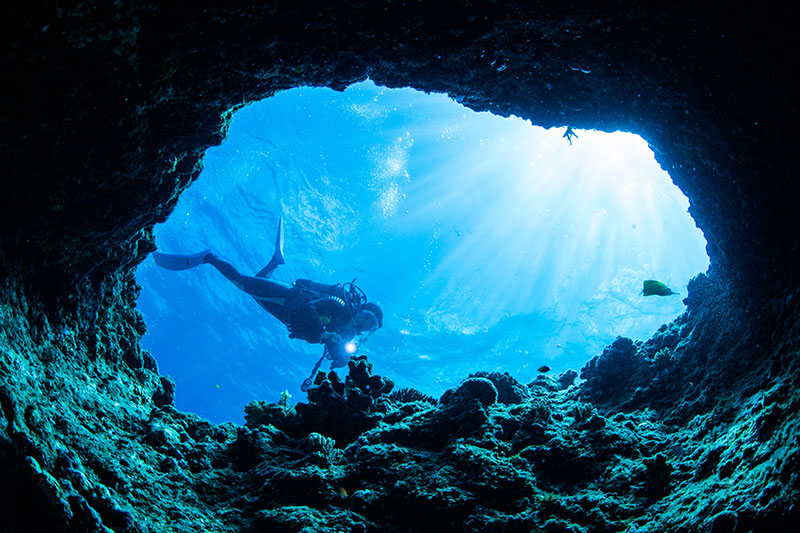Cave Diving 101: Extreme Adventure Beneath the Surface

For those who crave adventure that pushes both physical and mental boundaries, cave diving is one of the most thrilling and dangerous experiences you can undertake. It combines the beauty of underwater exploration with the eerie mystery of hidden, submerged cave systems. It’s not for everyone, but for those brave (and trained) enough, cave diving offers a world unlike any other on Earth.
Whether you’re a curious traveler or an aspiring diver, this guide to Cave Diving 101 will give you a clear look at what this extreme sport involves, and why it’s such a magnet for true adventurers.
What Is Cave Diving?
Cave diving is a type of scuba diving that takes place in underwater caves. Unlike open water dives, these dives often involve tight spaces, limited visibility, and no direct access to the surface—making training and preparation critical.
Many caves are filled with stunning geological formations like stalactites, stalagmites, and crystal-clear pools, creating surreal underwater landscapes that few people ever witness.
Why Is Cave Diving Considered Extreme?
Cave diving is often classified as one of the most technical and risky forms of diving, for several reasons:
- No direct ascent to the surface: In a cave, you can’t simply swim up if something goes wrong.
- Limited visibility: Silt or movement can easily cloud the water.
- Navigation challenges: Caves are complex and maze-like—getting lost is a real risk.
- Air supply limits: Every move must be calculated to conserve oxygen and allow for exit.
Because of these risks, cave diving is only recommended for certified and experienced divers who undergo specialized cave diving training.
Where Can You Go Cave Diving?
Some of the world’s most famous cave diving destinations include:
- Cenotes in Tulum, Mexico – Known for clear freshwater and light-filled caverns.
- Blue Hole in Dahab, Egypt – A challenging and infamous dive site for the experienced.
- Devil’s Cave System, Florida, USA – Popular with cave diving professionals.
- Eisriesenwelt, Austria – The largest ice cave in the world (dry caving with technical segments).
- Yucatán Peninsula, Mexico – Home to the largest underwater cave systems on Earth.
Essential Gear for Cave Diving
Cave diving requires more equipment than recreational scuba diving. Some essentials include:
- Double tanks or rebreathers for extended air supply
- Dive lights (primary and backups)
- Guideline reels for navigation
- Redundant gear (extra masks, regulators)
- Dry suit or wetsuit, depending on water temperature
- Helmet and communication system (optional but useful)
Training & Certification
Before entering any cave system, divers must complete cave diving certification, typically through agencies like:
- NSS-CDS (National Speleological Society – Cave Diving Section)
- TDI (Technical Diving International)
- PADI TecRec (for technical diving pathways)
Training covers navigation, emergency protocols, buoyancy control, and use of specialized equipment.
Safety Tips for Cave Diving
- Never dive without proper training
- Always use a guide line to avoid disorientation
- Follow the “rule of thirds”: 1/3 air to go in, 1/3 to return, 1/3 for emergencies
- Dive with a buddy, ideally someone with equal or greater experience
- Check equipment thoroughly before every dive
Cave diving is unforgiving of mistakes. Preparation and discipline are non-negotiable.
Why People Do It
Despite the risks, cave diving is deeply rewarding. It offers:
- A sense of exploration and discovery
- Access to untouched natural beauty
- A unique way to test personal limits
- The satisfaction of mastering a high-skill discipline
For many divers, cave diving represents the ultimate form of underwater adventure, where solitude, silence, and scenery combine to create a truly otherworldly experience.
Final Thoughts
Cave diving is not just a sport—it’s a serious commitment. It requires training, respect for nature, and an explorer’s mindset. But for those who are ready, it opens the door to some of the planet’s most breathtaking and mysterious environments.
So if you’re looking to go beyond beaches and reefs, and into the hidden heart of the Earth, cave diving might just be your next big adventure—beneath the surface.





